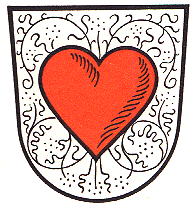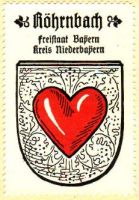Röhrnbach: Difference between revisions
Jump to navigation
Jump to search
Knorrepoes (talk | contribs) No edit summary |
Knorrepoes (talk | contribs) m (Text replacement - "|↵'''Country''' : Germany" to "| <center>''' {{uc:{{PAGENAME}}}} '''</center><br> '''Country''' : Germany") |
||
| Line 3: | Line 3: | ||
|[[File:rohrnbac.jpg|center|350 px|alt=Wappen von {{PAGENAME}}/Arms (crest) of {{PAGENAME}}]] | |[[File:rohrnbac.jpg|center|350 px|alt=Wappen von {{PAGENAME}}/Arms (crest) of {{PAGENAME}}]] | ||
| | | | ||
<center>''' {{uc:{{PAGENAME}}}} '''</center><br> | |||
'''Country''' : Germany [[File:germany.jpg|60 px|right]]<br><br><br> | '''Country''' : Germany [[File:germany.jpg|60 px|right]]<br><br><br> | ||
'''State''' : [[Bayern]][[File:Bayern.jpg|60 px|right]]<br><br><br> | '''State''' : [[Bayern]][[File:Bayern.jpg|60 px|right]]<br><br><br> | ||
Revision as of 10:15, 21 May 2023
|
Country : Germany State : Bayern District (Kreis) : Freyung-Grafenau (until 1973 Wolfstein) Additions:
|
| German | In Silber ein rotes Herz. |
| English | Argent, a heart Gules. |
Origin/meaning
The arms probably date from the latter part of the 19th century.
The village belonged to 1803 to Passau and there are no historical arms or seals known. The heart was in 1890 explained to symbolise the 'good hearts' of three local nobles, Jörg Watzmannsdorfer, Burkhard Puchberger and Ulrich Schätzl, who saved the village during a famine in 1459. During 7 months they distributed foods in front of the local church. It is unlikely though that the heart is taken from this story. The origin thus remains unknown.
The arms by Hupp in the Kaffee Hag albums +/- 1925
Literature: Stadler, 1964-1971, 8 volumes.




